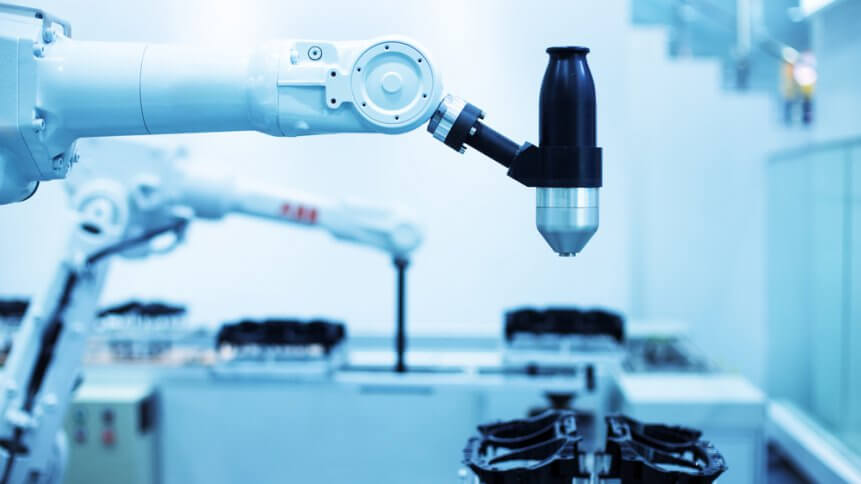Google claims new AutoML will ‘evolve’ without human intervention

- Google scientists claim a new AutoML method that ‘evolves’ without human intervention
- Google’s AutoML-Zero will present new opportunities for businesses worldwide
Google is at the forefront of advanced artificial intelligence (AI) systems and tools. Late last year, the tech titan developed a machine learning model that enable developers to “visually investigate model behavior” in machine learning models.
This revolutionary set of tools and frameworks, known as Explainable AI, will help developers and data scientists to uncover the complexity of machine learning models and gain enhanced insights.
Recently, the search giant unveils another advancement in the machine learning sphere.
The basic premise of machine learning, in theory, is simple. An algorithm is fed a dataset, and is ‘taught’ to respond in certain ways the next time it encounters similar data.
But in practice, it’s very difficult, and that’s why there’s such demand for specialists like data scientists. Creating a machine learning algorithm requires numerous steps from gathering and preparing data, setting evaluation protocols, and developing benchmark models, before there is anything near a workable machine learning algorithm ready for deployment.
Even then, they may not work well enough, and that means going back to the drawing board. Machine learning requires an extensive list of skills including computer science and programming, mathematics and statistics, data science, deep learning, and problem-solving.
In short, machine learning is out of reach for many, and yet the rapid boom and endless applications emerging mean more and more businesses now want to get hands-on, whether that’s to improve products and services for customers, or to make internal processes more efficient.
That surge of interest has led many to consider ‘off-the-shelf’ machine learning solutions, and that was how automated machine learning came to be – to make ML accessible to non-ML experts.
The rise of AutoML
Automated machine learning, or AutoML, reduces or completely removes the need for skilled data scientists to build machine learning models. Instead, these systems allow users to provide training data as an input, and receive a machine learning model as an output.
AutoML software companies may take a few different approaches. One approach is to take the data and train every kind of model, picking the one that works best. Another is to build one or more models that combine the others, which sometimes give better results.
Despite its name, AutoML has so far relied a lot on human input to code instructions and programs that tell a computer what to do. Users then still have to code and ‘tune’ algorithms to serve as ‘building blocks’ for the machine to get started. There are pre-made algorithms that beginners can use, but it’s not quite ‘automatic’.
But now a team of Google computer scientists believe they have come up with a new AutoML method that can generate the best possible algorithm for a specific function, without human intervention.
The new method is dubbed AutoML-Zero, which works by continuously trying algorithms against different tasks, and improving upon them using a process of elimination, much like Darwinian evolution.
Survival of the fittest
AutoML-Zero greatly reduces the human element which had heavily influenced ML programs before, with more complex programs requiring sophisticated code written by hand. Limiting human involvement also helps remove bias and potential errors, especially when multiple iterative developments are involved.
Esteban Real, a software engineer at Google Brain, Research and Machine Intelligence, and lead author of the research, explained to Popular Mechanics: “Suppose your goal is to put together a house. If you had at your disposal pre-built bedrooms, kitchens, and bathrooms, your task would be manageable but you are also limited to the rooms you have in your inventory.
“If instead you were to start out with bricks and mortar, then your job is harder, but you have more space for creativity.”
Instead, Google’s AutoML-Zero uses basic mathematics, much like other computer programming languages. AutoML-Zero appears to involve even less human intervention than Google’s own ML programming language, Cloud AutoML.
In a basic sense, Google developers have created a system that is able to churn out 100 randomly-generated algorithms and then identify which one works best. After several generations, the algorithms become better and better until the machine finds one that performs well enough to evolve.
New ground can be made here as those surviving algorithms can be tested against standard AI problems for their ability to solve new ones.
The development team is working to eliminate any remaining human bias their method retains, as well as to solve a tricky scaling issue. If they are successful, Google might be able to introduce a full-scale version that provides machine learning capabilities to small-medium enterprises (SMEs) and non-ML developers.
And crucially, those machine learning applications will be free from human input.










